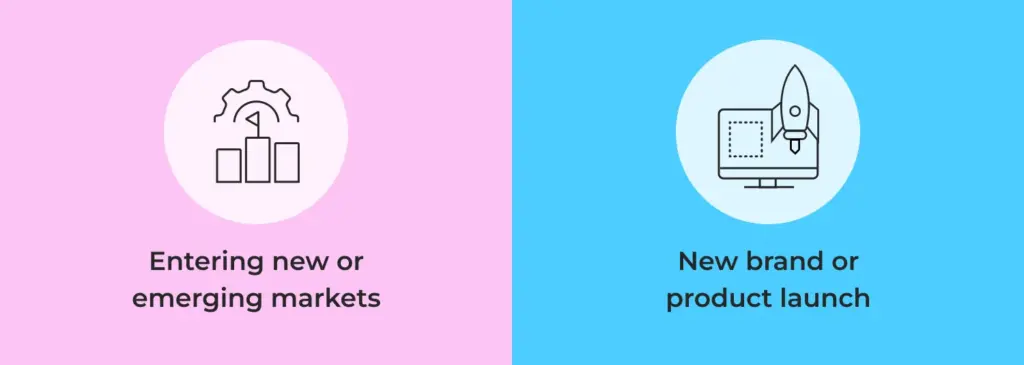How AI Is Changing Marketing Translation
As brands expand their reach, the need for efficient, accurate, and culturally nuanced marketing translation has never been more critical.

AI has already become mainstream with the wide adoption of large language models (LLMs) for creating content. The use cases in marketing go beyond content generation and content marketing. AI is being used in personalization, social media monitoring, programmatic advertising, and marketing translation.
Using AI in translation has been a game changer in global marketing due to the ability to scale quality translations. As brands expand their reach, the need for efficient, accurate, and culturally nuanced marketing translation has never been more critical.
Goals and Challenges in International Marketing
Global marketers share a common goal: developing and translating marketing content and launching multilingual campaigns quickly while delivering messages that resonate in every market. However, this comes with its own set of challenges:
- Speed and scale: Traditional approaches, such as using computer-assisted translation tools with human translators, cannot deliver translations at speed and scale across multiple languages. Marketers often lose valuable time inputting translations manually, waiting for human reviews, getting the right, qualified translators, and managing consistency across all campaign materials.
- Accuracy and quality: It’s a delicate balance to ensure translation accuracy while maintaining the speed necessary to launch campaigns on time. Marketing managers, who are typically not linguists, face difficulties in reviewing translations in multiple languages. Internal reviewers may lack the skills or time for thorough evaluations, and out-of-context reviews can lead to avoidable errors and further back and forth.
Global marketers should integrate marketing translation into their strategic planning from the outset to ensure alignment with overarching goals, including:

At the same time, they also need to respond quickly to breaking news or shifting customer sentiment and experiences. Their day-to-day operations include website translation and managing multilingual content across various platforms. These tasks can be overwhelming, especially with limited in-house translation and cultural adaptation expertise. And continual improvement in campaign performance requires considerable time and resources.
AI in Multilingual Marketing
AI tools can deliver the speed and scale that global marketers need in marketing translation. This is where AI can be leveraged in global content:
- Large Language Models (LLMs): LLMs such as ChatGPT can help generate source content from social media posts to ad copy. These advanced models have the potential to generate source content in multiple languages rather than follow the traditional workflow of translating the source content in the target language.
- Machine translation (NMT): Advanced AI-powered translation engines can produce high-quality translations at speed. These systems use AI and deep learning to continuously improve, offering increasingly accurate and natural-sounding translations.
- Adaptive machine learning: AI systems can learn from human corrections and preferences over time, continuously improving their output to match a brand’s voice and style.
- AI quality estimation (AIQE): This technology evaluates the quality of machine-translated content, helping marketers identify which segments need human review and which can be used as-is, saving time and resources.
- AI post-editing (AIPE): AIPE acts like a human post-editor. It takes your source and previously translated content and creates a refined translation. It may also apply to your brand or style guide.
- Workflow automation: AI-driven platforms can automate many aspects of the translation process, from content extraction to file handling and project management, streamlining operations and reducing manual intervention.
The Power of Human-AI Collaboration
Despite the advances of AI in marketing translation, there are still marketing content types where translation output may require human review. This approach combines the strengths of both machine and human intelligence. This hybrid model allows marketers to:
- Optimize for content types: Use pure machine translation for high-volume, time-sensitive content like product descriptions, help documentation or user-generated content while employing human expertise for nuanced marketing copy or brand-critical materials.
- Adapt to language pairs: Leverage AI more heavily for well-established language pairs with extensive training data while relying more on human translators for less common or more challenging language combinations
- Maintain brand consistency: Use AI to enforce terminology and style guidelines across all markets, with human oversight to ensure brand voice remains intact.
- Enhance cultural adaptation: Use AI and/or human experts to fine-tune content to ensure cultural relevance and appropriateness
Marketing Translation With AI-Enabled Solutions
The benefit of using AI in global marketing content is clear: the ability to create campaigns for international audiences quickly.
However, global marketers still face numerous hurdles. How can they build AI tools into their existing marketing tech stack? Can they customize workflows for seamless integration? Do they have in-house linguists and in-country experts to review AI-translated output? Can they view translated content in context to see multilingual content in its final layout?
Welocalize launched OPAL-Marketing to address the specific needs of global marketers. This AI-powered solution is designed to streamline and enhance global marketing campaigns across regions and languages.
 Siobhan Hanna
Siobhan Hanna Erin Wynn
Erin Wynn
 Nicole Sheehan
Nicole Sheehan Kimberly Olson
Kimberly Olson Matt Grebisz
Matt Grebisz Christy Conrad
Christy Conrad Chris Grebisz
Chris Grebisz Dan O’Brien
Dan O’Brien